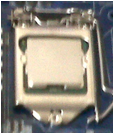Step 1-Now windows is installed onto your computer system you will have to configure windows with your settings, first it will ask you to enter a user name and name your PC then click Next

Step 2-Enter a password of your choice then enter a hint encase you forget your password you are unable to assess your files, after you have done so click on Next

Step 3-Now Windows will ask you if you would like to activate your copy of Windows, Enter your 25 character Activation code on your CD then click Next

Step 5-Now you have completed this setup, Windows will ask you some relatively simple questions regarding your setup, for example these would be;
-Set up a network
-Set up Windows update
-Set up Date and Time
-Ask you for automatic driver installation disk
These steps just require general knowledge about your set up and what you would use your computer for. Windows also has a help option on every page to help you diagnose problems















